Almost 80,000 km in 2 years (I drive too much!) The Leaf remains as perky and smooth as day 1, which is pretty amazing.
I changed the format of my cost updates somewhat and will issue them on a roughly 6 month basis going forward. The new format of the chart should be easier to read and thus more informative. Previous updates are linked below:
Lucky 27,777km and February 2015 Cumulative Cost Update
Cost update 63,500 km, Dec 2015
Key values from the last 4 months; I’ve spent a grand total of $120 on maintenance (in 2 years!) vs about $900 that would have been spent in our gas car in the last 4 months alone. (The service intervals were the expensive ones and included the regular oil change/inspection, extra inspections [engine coolant, etc], plus fuel injector cleaning and brake service.)
The lower gas price is definitely chewing into my savings potential, since the cost of fuel has fallen by about 25% since I purchased the car in May 2014, but I’m saving on average $315/month vs the ICE, and $240/month vs the Prius (for a total cost of $855 and $880/month respectively vs $820 for the Leaf), so I’m still coming out ahead.
I’ve actually also reached an interesting point – the Leaf is now cheaper on a cumulative basis than either a Prius or ICE! Going back to my first cost report, I predicted this to occur in Q3 of 2016 – it happened almost 6 months earlier than I thought, at the 24 month mark, despite the lower gas prices throughout 2015 (lower than I would have thought would be possible if you had asked me at any point in 2014). This is largely due to the maintenance interval noted above. Of course for the gas car it only gets worse from here on out, with another major service at 96,000 km (replace plugs, tranny/differential fluids), and again at 160,000 km (replace timing belt, adjust valves, recondition injectors, etc). There will be some more major inspections for my Leaf at its 3 year annual service, but nothing like the above.
However, you will note that I have moved up the date that I expect to replace the battery in the car… and it’s a big move, to year 3.5. This is about 3 years earlier than I originally thought (I might be able to squeeze it one more winter and get to 4.5 years still). The jury is still out on this one though, it depends a lot on what kind of degradation I see this summer and next. I got a program for my phone called LeafSpy which allows you to get a sense of battery degradation. The first battery bar is not lost on a Leaf until you drop below 85% of original capacity. When I first got the program in November 2015, it showed my battery at 99%, where it largely stayed throughout the first few months, then as the temperature got above zero reliably starting in February, my capacity started to drop fairly quickly until it levelled off around 89% in April. It is still sitting there as of mid-May, so I’m not sure what to think. Importantly, I can still take the car on road-trips for its annual service (I just got back from Kelowna), thanks to the densifying charging infrastructure (more on this in a future post this month.)
Having said that, I don’t expect anyone buying any 2nd generation EV (e.g. Leaf 2 coming in 2017 [or even the 2016 30 kWh version], the upcoming Chevy Bolt early 2017, Tesla Model 3 late 2017, etc) to face a similar quandary as I will. Reason? The battery on these vehicles will be much larger, with newer chemistries, and as such will be much more resistant to degradation. Even for my 2nd battery, I expect it to last the remainder of the life of the car with the advances in chemistry that have been made in the last several years since the Leaf was originally conceived. (Now we just need to convince Nissan to allow a battery capacity upgrade program, similar to what BMW just announced with the i3!)
When the range gets low enough that I can’t reliably make it back home from work, then we will be faced with the choice of replacing the battery, or swapping the Leaf to be my wife’s city car, and buying a new long-range EV. I just hope that long-range EV is a reasonably priced AWD CUV/SUV type vehicle to replace the Subaru Forester.
As a city car (for us), the Leaf will probably never need a new battery over the life of the car, so that will probably be the choice we make. Stay tuned!
Questions or comments? Leave them below!
- R1T Efficiency Tests: Bikes and Ski Boxes - March 30, 2024
- Adding Outdoor Accessories to my R1T - December 1, 2023
- Why an EV truck? Why the R1T? - October 8, 2023
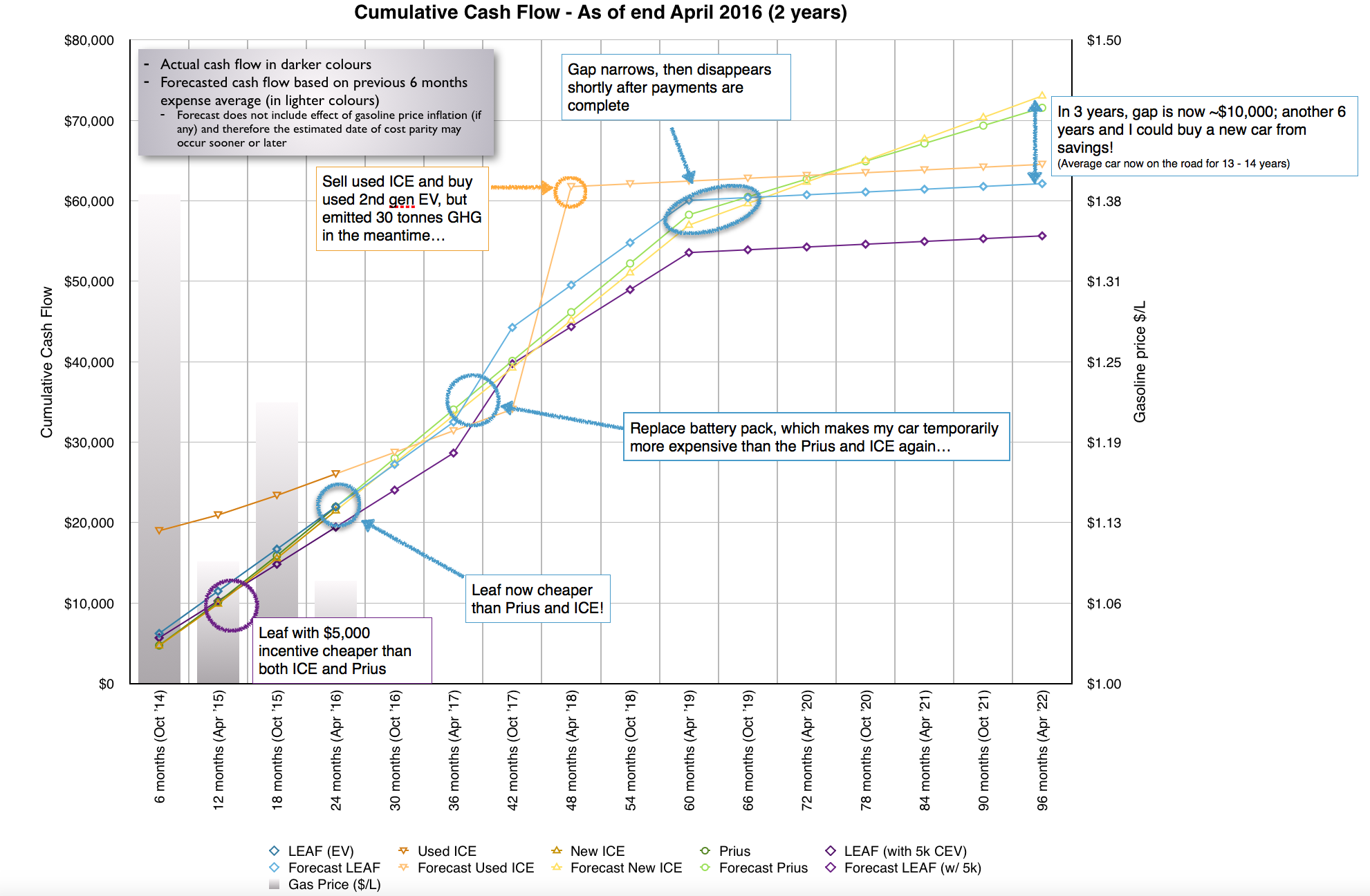
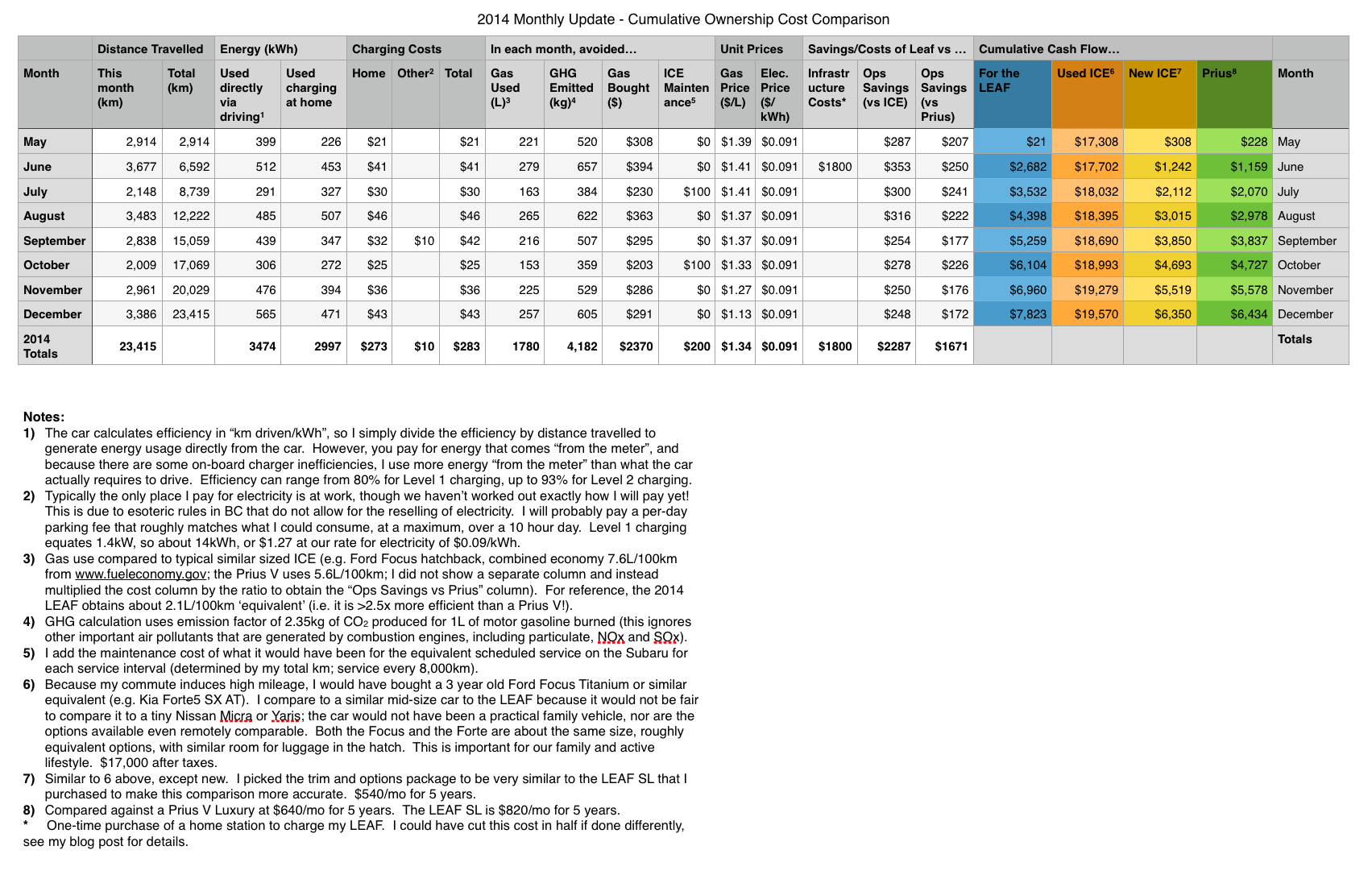
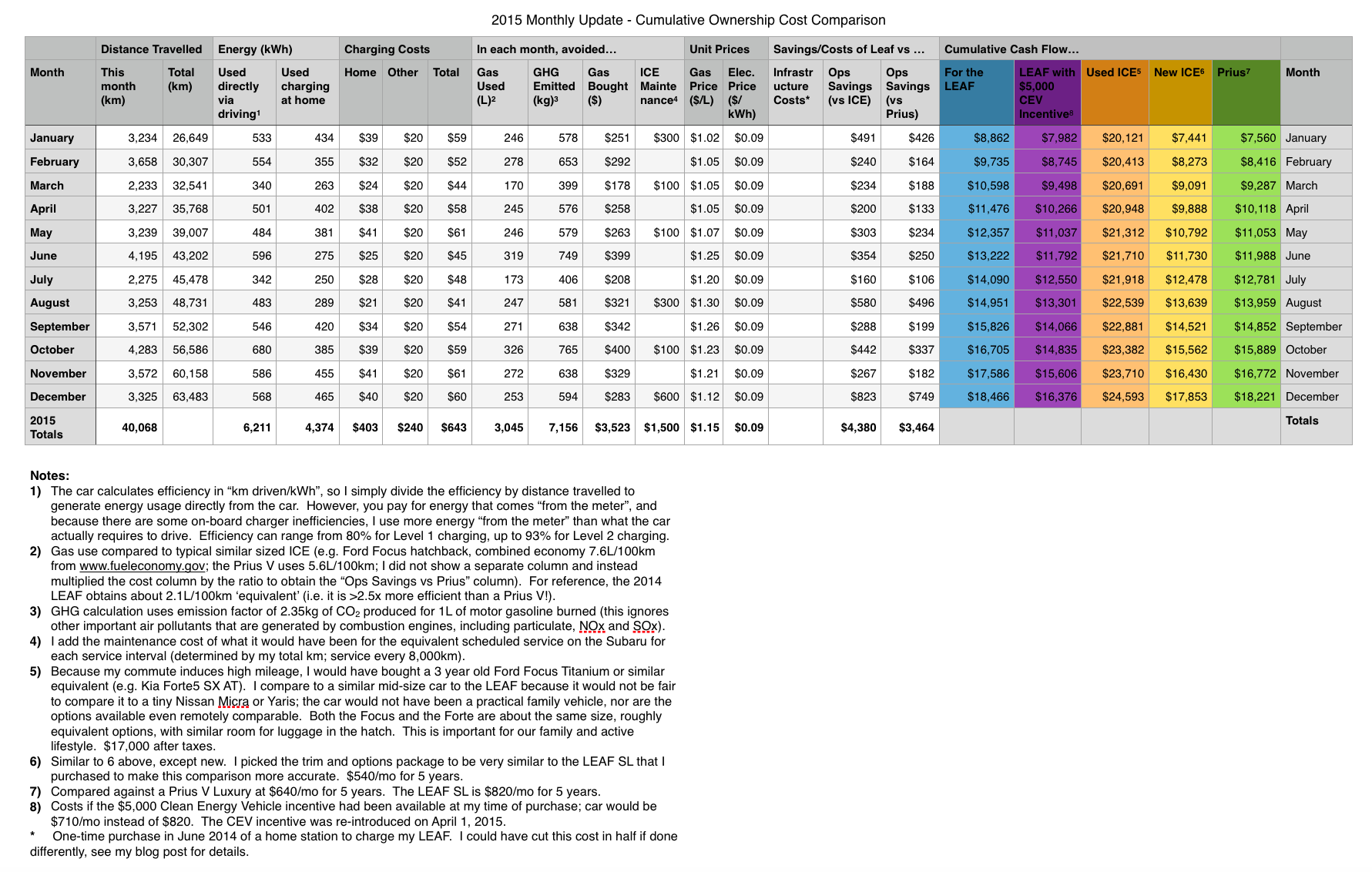
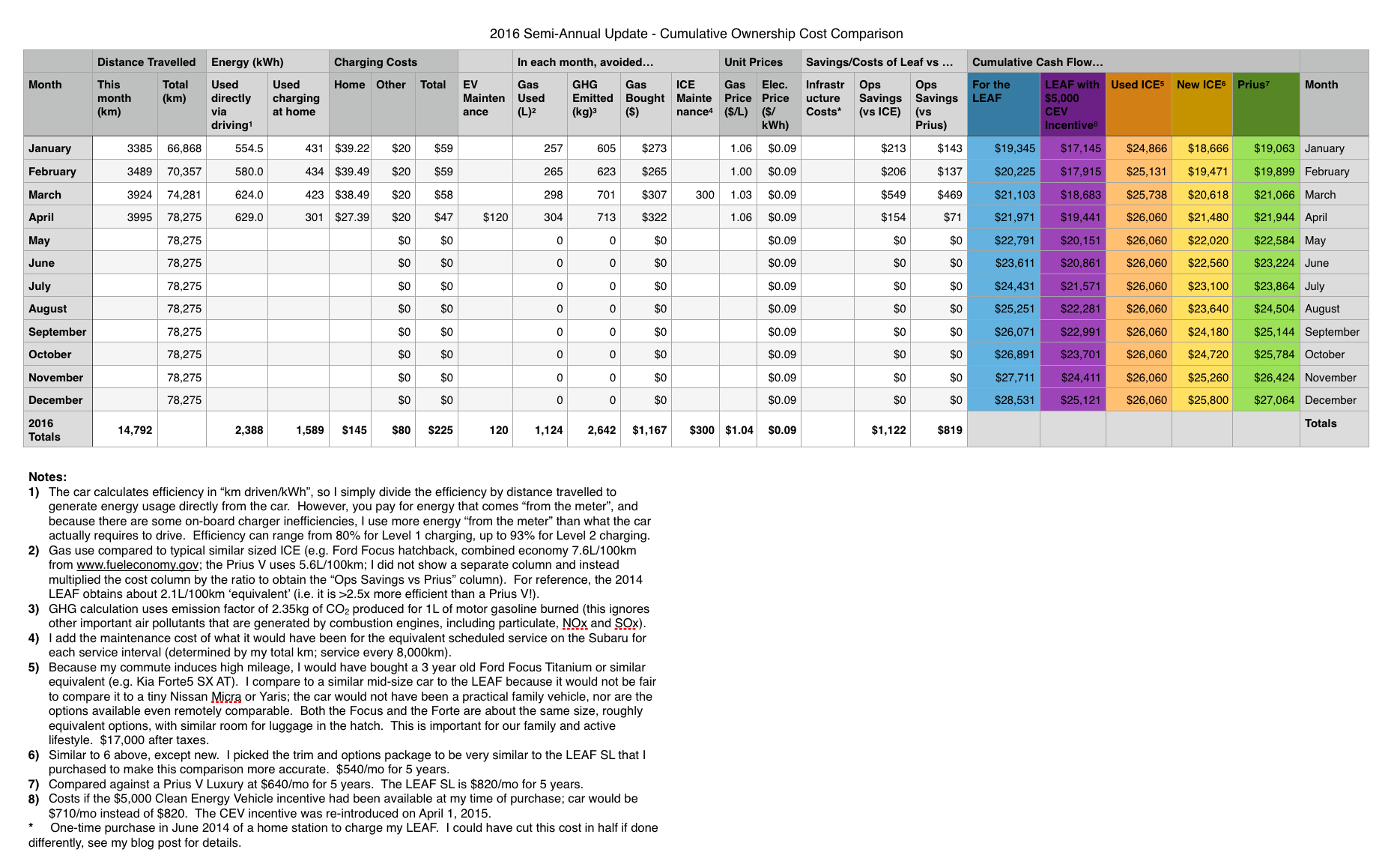
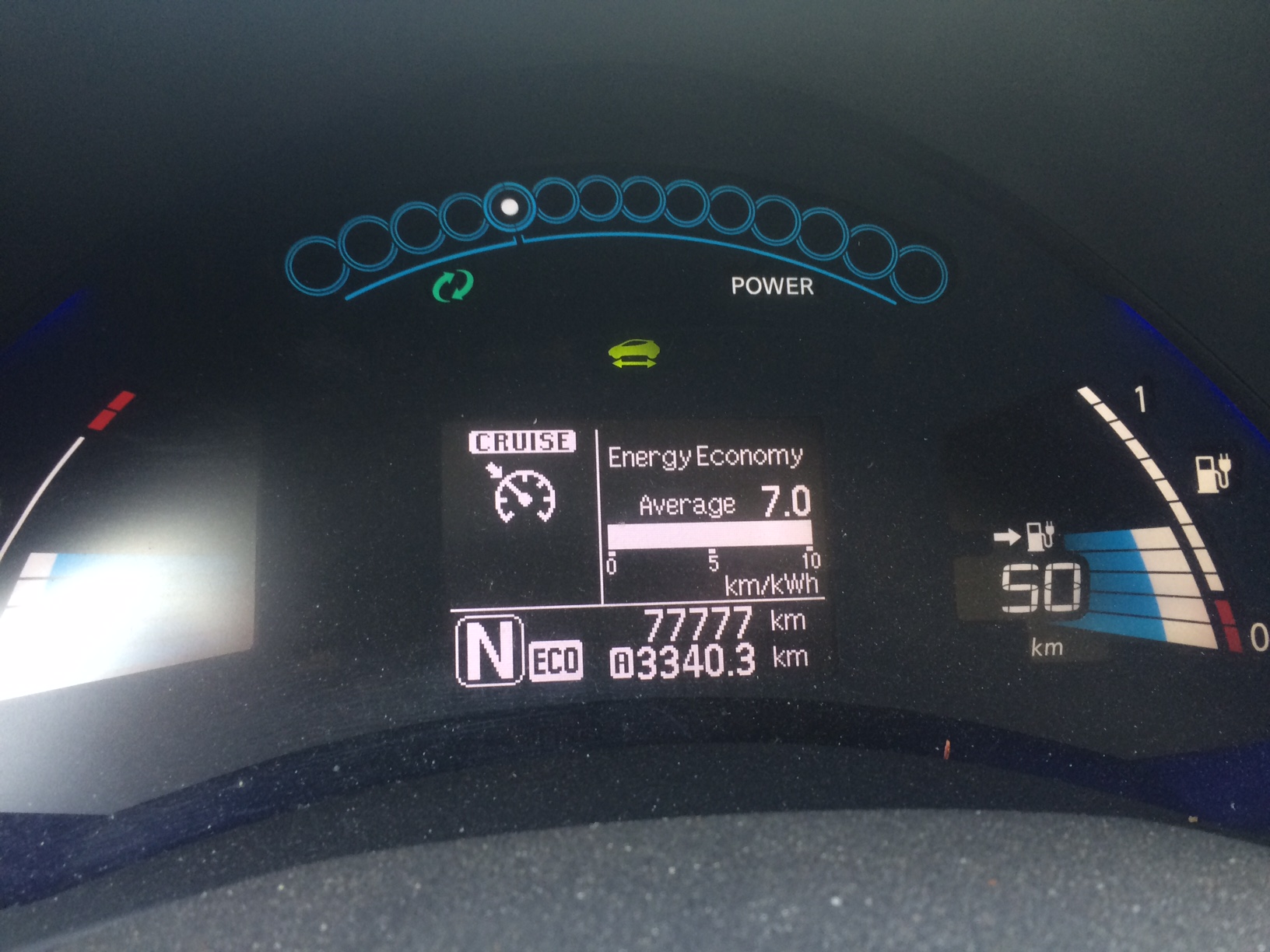
Glad to see the economics are working for you! I should do the same sort of analysis with my car… 41,500 km in the first year, no issues. As batteries get better, gas gets more expensive, the economics will shift even more firmly to the side of EV’s.
I absolutely agree Brock!
Wow. You prefer busses and bikes over cars and meanwhile drive almost 80 k Kilometers over 2 years. That’squite a drag on our environment. What’s causing you that much kms?
My commute to work is > 90%. I’d certainly rather sit on a bus and do something more productive if I have to work that far away, but the bus option turns a one-way 1 hour trip into 2.5 hours, which just isn’t practical. So faced with this length of commute, I chose to take a chance and buy an EV (without any gov’t incentive even) to lessen my environmental impact. Electricity in my area is very green, so I have dropped the impact considerably. We still prefer to take our bikes where possible on the weekends and evenings.
How is it a ‘drag’? In this province power is 93% green (not sure of the exact number where Andrew is, but it’ll be close). Many people live in relatively small communities distant from everything, driving is the only real option… no buses or rapid transit. I see this as being a significant improvement from 40k annually in an ICE!